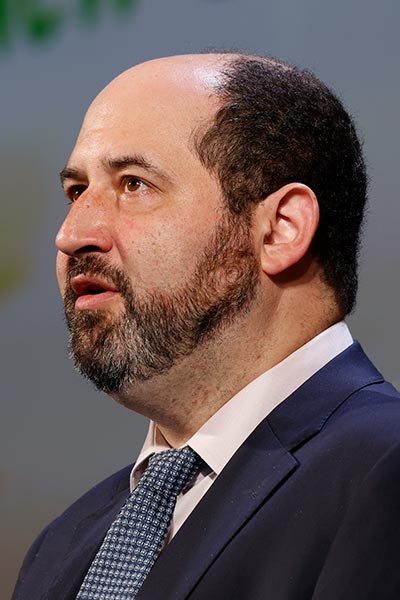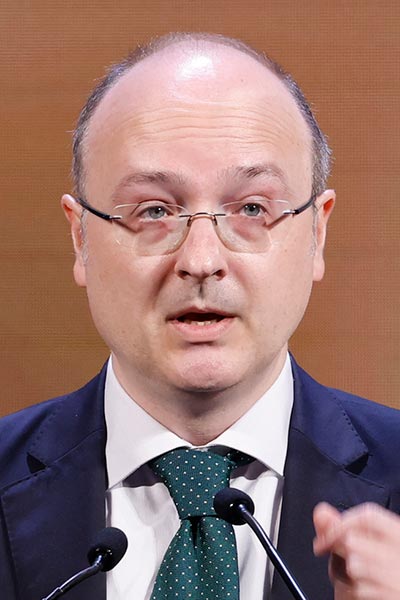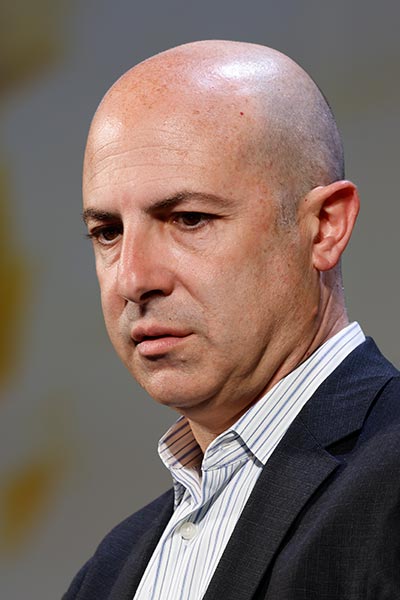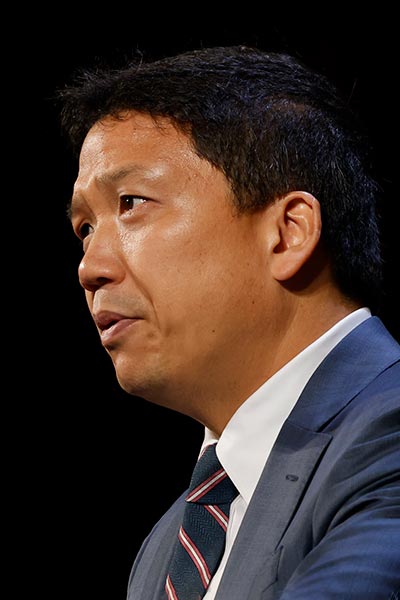Researchers report results from four trials of immunotherapy drug combinations
//
Estimated Read Time:
Anti-PD1 therapy can be highly effective in treating melanoma, but many patients develop resistance. Tumors of patients who progress on single-agent anti-PD1 therapy often have no T-cell infiltrates, said Ari VanderWalde, MD, MPH, West Cancer Center. In some patients, the CTLA-4 checkpoint leaves T cells stuck in the lymph node and unable to infiltrate the tumor. An anti-CTLA-4 agent could allow T cells to infiltrate the tumor, reversing resistance to anti-PD-1 agents.

The SWOG1616 trial tested that strategy, comparing combination therapy of ipilimumab, an anti-CTLA-4 agent, plus nivolumab, an anti-PD-1 agent, or ipilimumab alone in 91 patients with advanced melanoma refractory to anti-PD-1 or PD-L1 treatment.
VanderWalde presented SWOG1616 trial results during the Clinical Trials Plenary Session Combination Immunotherapy Trials on Tuesday, April 12. The session can be viewed on the virtual platform by registered meeting participants through July 13, 2022.
Study participants were randomized 1:3 to ipilimumab monotherapy or ipilimumab/nivolumab combination therapy. Patients had periodic biopsies, imaging, and blood samples and remained on treatment until progression. Follow up continued until death or two years after treatment stopped.
Combination treatment showed improved progression-free survival (PFS) with an objective response rate of 28 percent in the combination arm versus 9 percent in the ipilimumab arm. Six-month PFS was 34 percent for the combination therapy versus 13 percent for ipilimumab alone.
“We did not see any difference in overall survival and the trial was not powered to detect it,” VanderWalde said.
Most patients reported treatment-emergent adverse events—87 percent for ipilimumab and 93 percent in combination therapy—most commonly diarrhea. The combination arm had more grade 3-5 toxicities and all toxicities were consistent with prior reports.
Combination therapy increased CD8+ cells in the tumor and boundary, particularly among responders.
Ipilimumab/nivolumab combination therapy may be appropriate for patients without response to anti-PD-1 therapy alone, VanderWalde said.

Intratumoral injection reverses anti-PD-1 resistance in advanced melanoma
Anti-PD-1 agents are standard of care for melanoma, but 60 to 70 percent of patients eventually develop resistance.
Final results of the phase II SPOTLIGHT-203 trial showed that BO-112, a nanoplexed double-stranded RNA that activates TLR3, RIG-1, and MDA5, can reverse anti-PD-1 resistance when injected directly into tumors, reported Iván Márquez-Rodas MD, PhD, Hospital General Universitario Gregorio Marañón, Madrid, Spain.
In combination with pembrolizumab, BO112 had an objective response rate of 30 percent and a disease control rate of 68 in patients with advanced melanoma resistant to anti-PD-1 alone.
SPOTLIGHT-203 enrolled 42 participants. Patients with unresectable cutaneous, acral, or mucosal melanoma resistant to anti-PD-1 therapy with injectable disease received intratumoral BO-112 injections up to 2 mg in up to eight lesions per cycle plus intravenous pembrolizumab every three weeks.
“The median duration of response has not been reached,” Márquez-Rodas reported. “Median progression-free survival was 3.8 months but has not yet been reached for patients with non-acral disease. We saw a very good safety profile with only 5 percent of grade 3 or higher treatment-emergent adverse events, no discontinuations, and no deaths related to treatment. These results warrant further investigation in randomized clinical trials.”

First-in-class success for anti-CD39 antibody and chemoimmunotherapy in metastatic gastroesophageal Cancer
A first-in-class global trial combining TTX-030, a novel CD39 antibody, with budigalimab and FOLFOX chemotherapy in 44 patients with gastric or gastroesophageal junction showed promising results with an objective response rate of 52.5 percent and a disease control rate of 92.5 percent as first-line treatment, reported Zev A. Wainberg, MD, University of California, Los Angeles.
Over half of patients, 26, were still in the study after 60 weeks.
“The ATP-adenosine axis is a critical pathway for immune suppression, and CD39 is the first step in the pathway,” Wainberg said. “Blocking CD39 suppresses adenosine to prevent immunosuppression and also increases extracellular ATP, which activates innate immune function to increase CD8+ T cells. We saw little toxicity associated with TTX-030 and no maximum tolerated dose.”
Preclinical models showed that combining CD39 inhibition with checkpoint inhibition or chemotherapy significantly improves antitumor immunity, Wainberg noted. Most patients, 97.7 percent, reported adverse events and 61.4 percent had grade 3-4 adverse events, most related to the chemotherapy component.

Positive report on novel PD-1/CTLA-4 bispecific checkpoint inhibitor in advanced solid tumors
Combining CTLA-4 blockade with PD-1 inhibition is an effective antitumor strategy with improved survival at higher anti-CTLA-4 doses, but higher doses also increase serious adverse events.
A novel checkpoint inhibitor, MEDI5752, is a bispecific antibody designed to mimic the improved therapeutic activity of combination high-dose CTLA-4/PD-1 inhibition while minimizing toxicity.
A first-in-human study of MEDI5752 with 61 patients in a dose-escalation arm and 25 patients in a dose-expansion arm showed deep and durable responses in patients with a variety of advanced solid tumors who were naïve to immunotherapy across doses from 2.25 mg to 2500 mg, reported said Ben Tran, MBBS, Peter MacCallum Cancer Centre, Melbourne, Australia.
The objective response rate in the study was 19.8 percent with a disease control rate of 53.5 percent. Median duration of response was 17.5 months.
Most patients, 85 percent, reported adverse events, with 38.4 percent reporting grade 3-4 effects, most in the 1500 mg and higher groups. Two patients discontinued due to adverse events, one each taking 2000 mg and 2500 mg.
“We found that doses less than 1500 mg were better tolerated but did not find a maximum tolerable dose,” Tran said. “We have seen patients responding beyond two years.”




